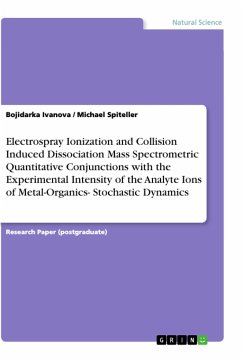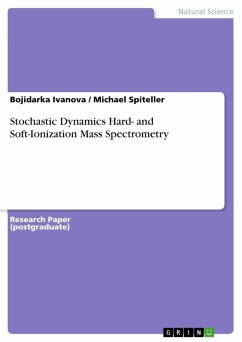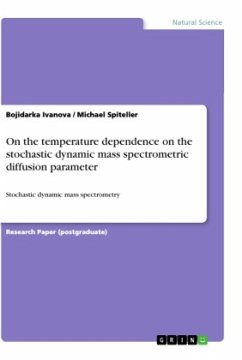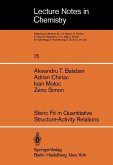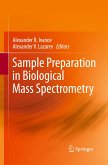Academic Paper from the year 2020 in the subject Chemistry - Analytical Chemistry, grade: Second author Michael Spiteller, University of Dortmund (Institut für Umweltforschung), language: English, abstract: The idea for this contribution has its root in exact formulas connecting between measurable variable intensity of mass spectrometric peak of analyte ion and its stochastic dynamic diffusion parameter introduced, more recently in our works devoted to quantitative mass spectrometry. Herein, we present innovative functional relations connecting among not only DSD- and I-parameters, but also the experimental factor temperature and the concentration of analyte in solution. The temperature is one of the most important parameter determining the ionization efficiency of analytes under soft-ionization mass spectrometric conditions.The focus of the work is not only on outlining quantitative conjunctions among experimental factors, respectively, parameters; measurable outcomes; and molecular properties, but also to help readers achieve in-depth understanding of governing factors determining the ionization efficiency of analyte ions with respect to temperature at a molecular level. Another important aspect for studying is that, all theoretical proposals introduced, so far, are based on stochastic dynamics. The latter field, however, is very broad. It encompasses a large set of mathematical methods applicable to explain diverse phenomena not only in the Chemistry, but also in the Physics, Astronomy, Economy, and many more research areas.The methodology used to our principle theory behind the derivation of model functional relations; our innovative empirical modification of known relationship; and corresponding definition of the DSD parameter as a function of the measurable variable intensity are based on Box-Müller method, Einstein's concept of diffusion within his molecular kinetic theory of heat; the forward Fokker-Planck equation (or the forward Kolmogorov equation,) where we empirically modify the characteristic function diffusion and its (their) application to Ornstein-Uhlenbeck process; approximations to a Wiener process; Gillespie's interpretation of Ornstein-Uhlenbeck process and its exact numerical solution, respectively.Due to, complexity of many of the soft-ionization mass spectrometric phenomena and the interconnection of different concepts behind our stochastic dynamic theory of exact quantification of the variable intensity, we hope that the readers will be able to gain the background to the different mass spectrometric phenomena and theories to more advanced primary literature sources, which can be found in the corresponding reference sections.


